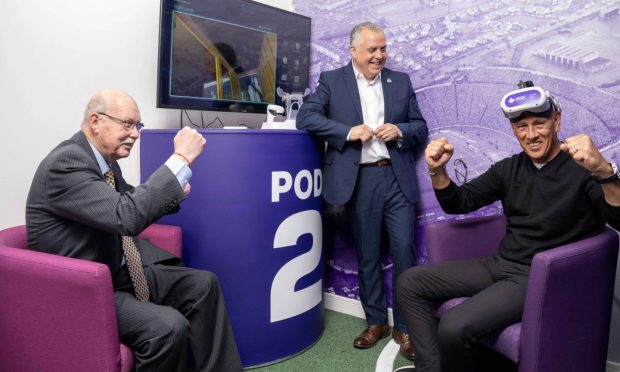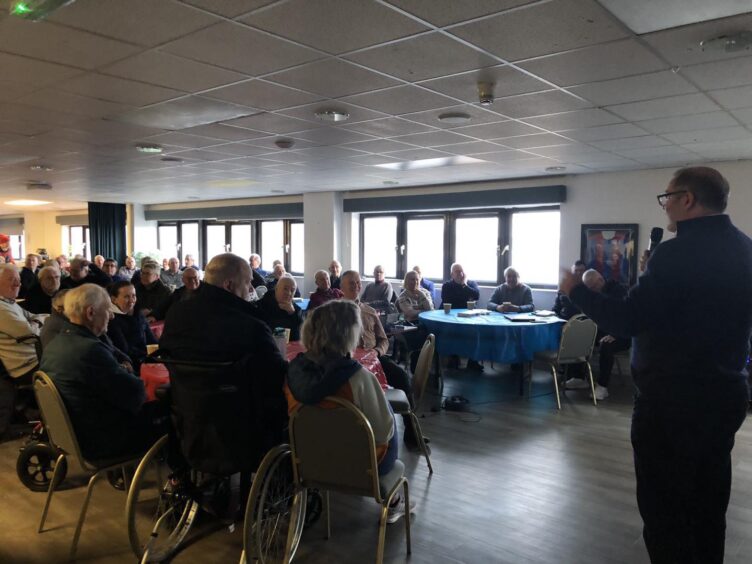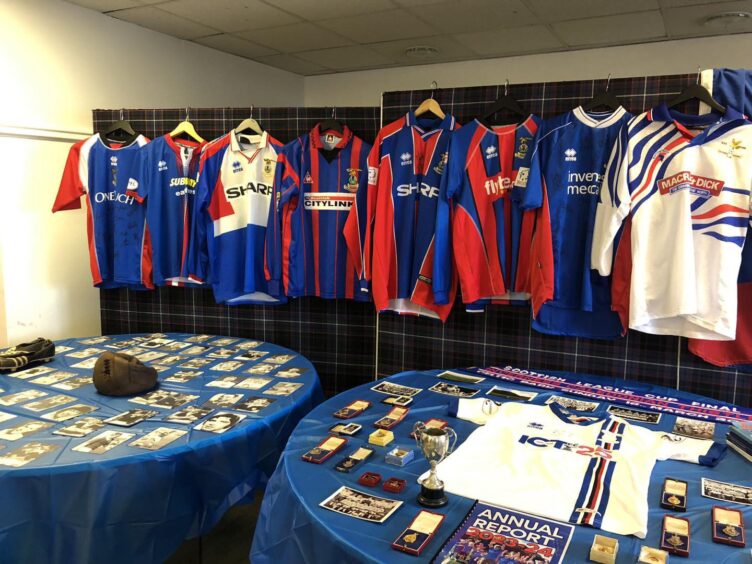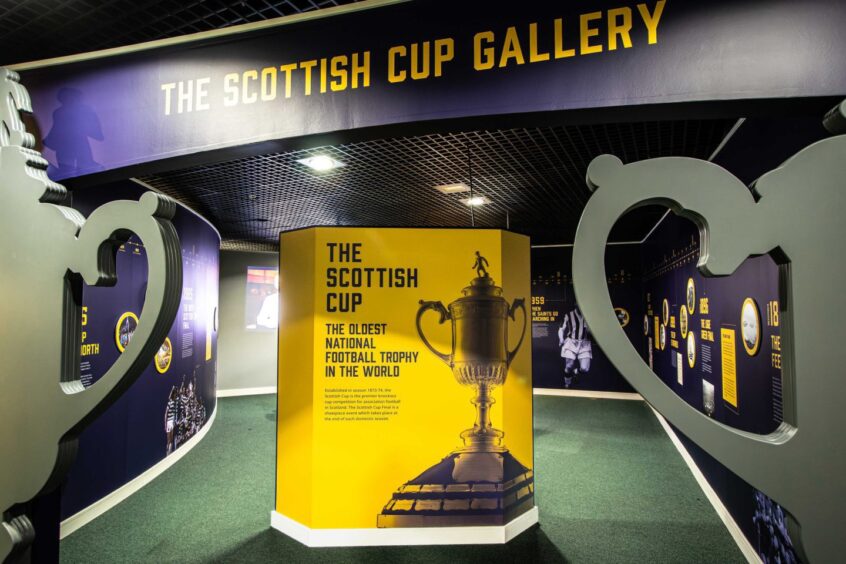Highland football fans who cannot make it to Caledonian Stadium Football Memories sessions could soon be able to relive the glory days using virtual reality.
Football Memories Scotland sessions kicked off 16 years ago and are now of huge interest to many across Scotland, including a particularly impressive uptake in the north.
The once-monthly sessions are aimed at elderly people, those with dementia or those who simply could benefit from meeting up once a month to relive past football highlights with fellow long-time supporters.
At the most recent Football Memories meeting at the Caledonian Stadium in Inverness, project director Richard McBrearty was the guest speaker.
Not only did Richard help launch Football Memories in 2009, but he is also curator of the Scottish Football Museum at Hampden Park, Glasgow.
He spoke in front of a packed room in the Kingsmills Suite at ICT.
Last summer, special VR headsets were made available at the museum on a test basis, with former Rangers star Mark Hateley – an Alzheimer’s Scotland ambassador – sampling the technology.
It is described as a “3D immersive experience (which) can help recreate the sights, sounds and atmosphere of past historic (football) encounters. The technology brings to life three key elements of bygone match-days – travelling to the game, clicking through the turnstiles and cheering from Hampden’s vast terraces.”
The VR project – the first of its kind in the UK – aims to offer therapeutic taster experiences and builds on a partnership begun by the charity Alzheimer’s Scotland and the Hampden-based Scottish Football Museum in 2009.
VR hub opens up new opportunities
Richard explained how the plan is to work towards these headsets being dispatched far and wide to benefit many who cannot get to regular Football Memories meetings.
He said: “In remote and rural areas, not everyone will be able to attend Football Memories groups.
“I recall a good few years ago, there was an Alzheimer Scotland link worker based in Caithness.
“She had four or five people a large distance away from one another who couldn’t attend a regular Football Memories meeting, so she was doing one-to-one sessions.
“Therefore, accessing images through technology was vital for her – she could personalise and reminisce depending on the person she was meeting that day.
“We’re creating as many resources as we can to create the link for people to football.
“We now have a VR (virtual reality) hub in place, which we’re testing now.
“If that works, and the evidence is it is well-received by most people, it’s an extra dimension for people – a nice intervention.
“That kind of technology is not massively expensive. It is becoming more and more economically viable.
“The software we have here can easily be transferred into other VR sets, so whether it’s Inverness, Ayr or Stranraer, it doesn’t matter. This material could soon potentially be made available.”
Biggest Memories group at Inverness
On his visit to Caley Thistle’s home, Richard was impressed with a packed room of 77 attendees – which was the record turn-out for the Inverness event.
He said: “The Inverness group was the biggest I’ve addressed since we set up in 2009 as a pilot project.
“It was quite a number – and I was very impressed and really pleased to see that.
“It shows the importance of the club to the local community.
“There are now around 500 groups across the country and there will be close to 80 that are like Inverness – in that they are community-based – and there are other senior and some junior football clubs that run groups as well.
“The sessions have a various range of guest speakers, and they draw in people who are fascinated by football and there are always questions to be asked and answered, which is great.”
ICTFC’s ‘milestone moment’, lifting the Scottish Cup part of gallery
Speaking about the Scottish Football Museum, Richard talked about how vital it was for the two-year-old Scottish Cup gallery to include Caley Thistle’s historic win in the competition a decade ago.
He said: “It’s the national stadium and we’re the national museum for Scottish football.
“To be national, you can’t just be about Glasgow or the central belt – it is important that our collections and some of the stories reflect far and wide.
“And that includes internationally, people have been travelling and moving in relation to football for well over 100 years, playing or coaching football.
“When it came to the new Scottish Cup gallery, as a historian looking now at 150 years of the competition, it was a big statement for the cup to go to the Highland capital in 2015.
“It really was a milestone moment.
“That’s why when we looked at many of the milestones within the timeline of the Scottish Cup, from 1874 to 2024, Caley Thistle’s story of winning the cup had to be presented.
Scandal surrounded 1876 cup final
“Alongside that, the 100th Scottish Cup final in 1985 (Celtic 2 Dundee United 1), and we go back to 1876 when Queen’s Park were defeated by Vale of Leven – but they (Vale of Leven) were accused of cheating.
“There was a huge scandal, but Vale of Leven went on to win the Scottish Cup a few years in a row.
“That was the first story we tell and to have the Inverness success of 2015 firmly as part of that was a huge moment for football in the Highlands and it was important to be part of the competition’s story.”
For more Caley Thistle news and updates visit our dedicated page and join our Facebook group.





Conversation